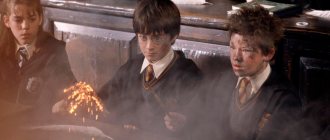Start making them in February so that your camp is not empty in the summer
Summer is a difficult period in children's clubs. The most common idea for organizing work during this period is opening a city camp. But why do some clubs already in April have no places for the first summer shifts, while others timidly answer parents by phone in May that in June two more peers will be expecting their child, one of whom is the child of the leader?
The key to successfully filling a camp with children is advance preparation and properly organized sales.
In this article, I tried to outline the main 8 steps to prepare for summer camp, which you should start doing right now, in February. These steps will help you look into the future with more confidence and set a strategy for moving the camp in the right direction.
Relay races
Team play with the passing of the baton will never lose its relevance. And it will come in handy in the camps.
Egg relay
Participants are divided into teams. How many teams depends on the number of applicants. For each group, 6-10 people are enough.
Players take turns running to the designated place, then returning. All actions take place with a spoon in your hands, in which there is an egg.
Everyone will try to run not quickly, but carefully, so as not to break the egg, because no one will know that it is boiled. However, no one is safe from an object falling in a spoon. When this happens, it is forbidden to lift it with your hands. Only with a spoon.
You can judge only by the speed of completing a task, but you can also judge by accuracy.
Bring some water
Buckets of water are placed not far from the teams. Empty containers are placed opposite. The distance is approximately 50 meters. The participants' task is to use dishwashing sponges to transfer water from one container to another.
There are two options:
- Transfer water to everyone at the same time. Then everyone is given a sponge.
- Transfer one by one. Then one sponge per team.
A time is recorded, after which the volume of water in two containers that were at a distance is measured. The group that endures the most water wins.
“Limpy” relay race
Those who wish to form into two teams, stand in two ranks opposite each other and are counted first or second. The “second” ones change teams. It turns out that in groups there are people next to each other, and rivals between them.
The task of the “first” is to return the “second” to their places. “The first” jump on one leg towards their opponents (from two teams at the same time), take the hands of the members of their team and return together on one leg.
Whichever team returns to its original lineup the fastest wins.
Autographs
Whatman paper is installed in front of the participating teams. On the table or on the wall, depending on the location of the games. Markers are left nearby.
Participants take turns running up to whatman paper and writing their first and last name. They sign an autograph nearby. The task is to cope faster than others. However, participants from the losing teams who did not have time to sign on the large sheet are given the opportunity to do so. Because whatman paper with autographs can be left as a keepsake.
frogs
The essence of this relay race is no different from others. Only the participants will need not to run, but to jump like frogs. Squatting, hands on hips. And so on until the finish.
Transfer the wounded
Participants are divided into two teams of 9 or more people. The number of participants must be divided by 3. In each group, triplets are formed, in which 2 players are porters and 1 is wounded.
At the command of the leader, the porters carry the wounded man to the designated place, leave him and return to pass the baton to the next three.
The winner is the group whose wounded are delivered to the designated point faster. Additionally, you can use props that will serve as stretchers. For example, chairs.
Penguins
Participants pass the baton to each other according to the classic scenario. Only getting to the designated place will be a little more difficult. Namely, holding a tennis ball between your knees.
Active games
What would it be like without fun games for the active children who attend the camp? Here are some fun competitions that will improve your mood.
Fisherman
For this game you will need a long stick. Everyone stands in a circle. One goes to the center, takes a stick and, to the music, pretends to catch fish. Only at the same time he tries to catch people. At this time, the participants move in a circle.
Then the music stops. Whoever has the fishing rod on at this moment goes to the center of the circle and completes the task with a stick. The first fisherman stands in a circle. The tasks are voiced by the presenter:
- Sing a song using a fishing rod as a microphone.
- Pretend that the stick is a heavy barbell that needs to be lifted at least once.
- Play limbo with a stick. Two helpers will be needed to hold the stick you need to crawl under.
- Jump over the stick. You can keep the props high during this time.
- Walk along the stick as if on a rope.
- Play the fishing rod like a guitar.
- Play the props like a violin.
- Ride on a stick as if on a horse.
- Carry water as if on a yoke.
- Sweep the area in the center of the circle with a stick, like a broom.
Cat and sparrows
The game is most suitable for teams of the younger age category.
Participants are divided into pairs and sit in a hoop, which is located on the ground/floor. They play the role of sparrows that sit on nests.
Anyone who wants to play the role of a cat is separately invited.
At the command of the leader, the birds go for a walk, run, spin, etc. Then the sound “Stop!” and the cat runs out. The sparrows try to quickly return to their nests, and the cat tries to catch them. Whoever is caught is out of the game. It is permissible to return only to your own hoops, in your own pairs.
Repeat the moves
5 people are invited to participate. The leader gives each one his own movement, which must be filled in and only performed.
For example:
- Raise your hands up.
- Extend your arms forward.
- Clap your hands.
- Jump on the spot.
- Spin around.
In addition to movements, participants are assigned numbers. Then the presenter shows all the movements, voicing the numbers to which they belong. The first one is to raise your hands up, the second one is to stretch your arms forward, etc. In the process, the curator begins to get confused and call numbers for the wrong movements that are assigned to them. For example, the fourth - spin, the fifth - jump in place.
The most attentive participant wins.
Bouncers
Two drivers are selected. They will be the bouncers.
The bouncers stand on both sides of the playing field. In the center there are other participants who will need to dodge the ball. The drivers are trying to remove all the players from the field. The two remaining contestants become the new bouncers.
Merry little train
Everyone wants to become a train, placing their hands on the shoulders of the neighbor in front. Next, the participants simultaneously carry out the commands of the leader:
- For “One” we will squat down now.
- “Two,” we stretch our left leg to the side, gentlemen.
- “Three,” look at the neighbor behind you.
- “Four”, we stand up and put our feet wider.
- “Five,” let’s squat down again.
- “Six”, you need to stand up and then sit down again.
- “Seven”, do not sadden us with anything! Let's smile, sing a song and crawl in a circle. (verse from any song known to everyone)
- “Eight”, let’s stand together and don’t ask anyone.
- “Nine,” that song didn’t have a chorus. (they sing the chorus from the same song as the verse).
- We do “ten” jumps on the spot.
Then the final circle is a “train”, perhaps in a dance. In the lambada style, for example.
Postman
Those who want to play the role of a postman are given envelopes on which are written the full name of who to deliver the letter to. Everyone for whom the envelopes are intended must be among the participants in the entertainment program.
At the command of the leader, postmen deliver letters to the recipients. Typically, in day camps, children do not know everyone's name. Especially in the first days. This fact complicates the task. You'll have to ask around, look for it.
Additionally, you can put small surprises in the envelopes. For example, a magnet with the image of a camp or squad, etc.
Jumping
Two teams become a train parallel to each other. The first team representatives jump forward. The second players jump from the places where the first participants stopped. The third - from the landing mark of the second. And so on. The team with the longest jump wins.
Rules of behavior during walks (excursions, hikes).
- Children (teenagers) are allowed on walking excursions in appropriate clothing: closed comfortable shoes, a hat, and, if necessary, long trousers and long-sleeved shirts (sweatshirts).
- The leader during the excursion (trip) is the counselor. It is necessary to strictly follow the instructions of the accompanying counselors.
- During a walk, excursion, or hike, you should be with your group and not wander off. It is not allowed to deviate from the route (trail, path), approach electrical wires, unfenced edges of ravines, gorges, cliffs.
- It is necessary to promptly inform the counselor about deteriorating health conditions or injuries.
- You should respect local traditions and customs, take care of nature, historical and cultural monuments.
- Photography is allowed in specially designated areas during a general stop of the squad with the permission of the counselor.
- At the end of the excursion (walk, hike), gather at the indicated place and, after announcing the end of the excursion, follow the instructions of your counselor.
- When crossing the roadway, follow the traffic rules, strictly following the instructions of the counselor.
Absolutely forbidden
- During the entire stay at the Summer School, the possession and use of alcoholic beverages, tobacco products, and narcotic substances is prohibited.
- Parents are financially responsible for damage to property.
For violation of the rules of staying in the camp and the current legislation (theft, behavior that may harm the child’s health or the health of others, smoking, taking alcoholic beverages or drugs, etc.), the child may be expelled from the camp early and taken home for parents' account and no refund.
Anwser the questions
Younger kids may not be as interested in your stories about university, but that doesn't mean you won't have anything interesting to tell them. Invite them to ask you questions. Why did you decide to become a counselor? What was your favorite subject at school? When will we be allowed into the dining room? The questions may be different, the main thing is to try to give the most detailed answer to them. After this, not only will the children learn something new about you, but you will also look at yourself from a different, childish perspective.
An example of how to make a game out of thin air
Fire safety rules.
- It is necessary to know the evacuation plan for the dormitory building. If you notice signs of fire, leave the building immediately and notify any adult.
- It is prohibited to light fire indoors, on camp grounds, or while hiking.
- It is not allowed to use electrical appliances without the permission of the counselor.
- Smoking is prohibited in the camp.
- Flammable items should be deposited with a counselor.
- It is not allowed to touch sagging or protruding wires. The presence of such wires should be reported to the counselor.
Rules of conduct on buses
- Boarding the bus is done at the command of the guide (counselor).
- While the bus is moving, you are not allowed to stand or walk around the cabin. You cannot lean out of the window or put your hands out the window.
- When braking sharply, you must hold on to the handrails.
- If signs of motion sickness or nausea appear, you should immediately inform the counselor.
- You can only get up after the bus has come to a complete stop at the command of the counselor.
- Exit from the bus is through the front door. After getting off the bus, do not wander off, gather in the indicated place and follow the instructions of the counselor. You cannot go out onto the roadway or cross the street on your own.
Rules of conduct during public events.
- When holding mass events, you should be with the squad. You can only leave if accompanied by a counselor.
- Events should be attended in appropriate clothing and footwear. If this is not suggested by the script, you cannot appear at events in a swimsuit or flip-flops.
- When holding public events in open areas in sunny weather, a headdress is mandatory.
- You should follow the rules of etiquette in public places (do not make noise, do not push, do not whistle, do not stomp your feet).










